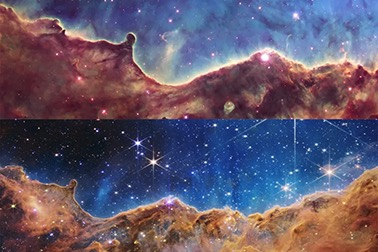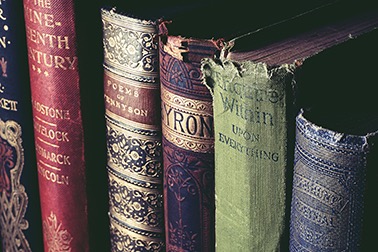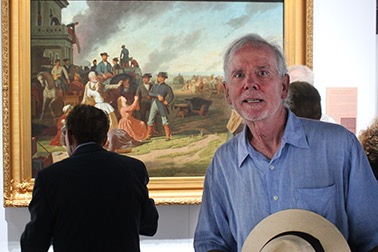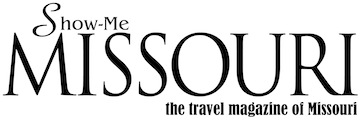Star Search
November 2022

I’m still waiting for NASA to name a telescope for Hubble’s fellow Missourian, Harlow Shapley.
Unless you’re a rocket scientist, you may not have heard of Harlow Shapley. But Albert Einstein knew him. And so did fellow Missourian Edwin Hubble.
Indeed, this Mizzou grad and stargazer should be in the Hall of Great Americans. Alas, he’s not even a footnote on the website for Mizzou’s Department of Physics and Astronomy.
Shapley almost missed his calling altogether. He wanted to be a journalist. That’s why he came to Mizzou. But he was ahead of his time.
He worked as a reporter even before he finished high school. Arriving at the University of Missouri in 1907, he planned to apply the next year to study journalism. But when he found out that the world’s first J-school had been delayed for a year, he picked another major. As a fledgling reporter, he must have begun looking at the course guide in alphabetical order, because his biography states that he almost decided to major in archeology, but finally settled on astronomy.
That turned out to be one giant leap for mankind, in terms of understanding our place in the universe. Harlow’s study of the speed of light illuminated the theory that Earth and its solar system are not in the center of the universe. In fact, according to Harlow, we’re nowhere near the center of the universe, which is much bigger than anybody thought. This monumental discovery shook the foundations of belief unlike anything since Copernicus, who proved that the sun—not Earth—is the center of our solar system. It was a dangerous belief to promote back in 1543, and Copernicus began his report by predicting his revelations would cause heartburn. Harlow Shapley’s discovery was every bit as unsettling.
Harlow’s resolve and determination were early indications that he later would stand firm in his discoveries, even against popular opinion. He didn’t attack religion any more than Copernicus did. But his discovery suggested that the Earth was not placed in the center of the universe. He suggested that the Milky Way, alone, contains a hundred thousand million opportunities for life. He knew it would cause a great philosophical debate when his scientific discoveries collided with Genesis and miracles, mysticism and the supernatural. That was not his intent. He just discovered the size of the Milky Way and the fact that Sagittarius, not our sun, is at its center.
Somewhere in the galaxy, Copernicus is smiling.
Harlow Shapley is just one of the surprising characters in John Robinson’s first book, A Road Trip Into America’s Hidden Heart.
Yard Bargains
August 2022

“Fifty cents.”
I didn’t quibble. I knew what I wanted. Hardback classics. I rummaged through several cardboard boxes and plucked out a half dozen keepers. A collection of Jack London short stories. Aldous Huxley’s “Brave New World.” A 719-page story that begins, “Scarlett O’Hara was not beautiful, but...”
My eyes grew wide when I snagged a four-pounder. It may have been my best catch of the day, an 1853 Works of Lord Byron, complete and unabridged, even as it sat without a cover on its back and spine. That’s okay, when I’m 160 years old, I won’t have a cover on my spine either. I held it tight like a new toy, even though I knew that for the rest of my life, I won’t sit still long enough to get through its 1,100 pages.
You never know what you’ll find at a yard sale. I’m not an expert, since I don’t work the sales religiously. But some people do. They scour the newspapers. They search websites. They plan their weekend strategies like Sun Tsu. They rise with the deer hunters and the milk trucks, and like an army, they do more before breakfast than most people do all day. Not me.
“Good selection,” the owner said as she accepted my money.
“I never read ‘Gone with the Wind,’” I blurted. “But I did see the first half of the movie.”
She looked at me with pity.
“The Byron!” I changed the subject, clutching the old book with both hands like it was the Stanley Cup.
“Yeah,” she sighed. “I’m an English teacher...” She explained she was getting ready to act on her life’s goal and launch into serious creative writing. I wasn’t sure why she would want to get rid of these classics. But she is an English teacher. She probably memorized most of this stuff...sees it in her dreams. Now she’s changing course, from full-time teacher to full-time writer.
Many of life’s transitions are marked by yard sales.
I thanked her for the treasures and wished her success in her literary career and took off down the street on my bicycle, two bags of books hanging from my handlebars like the scales of justice.
Every yard saler’s switch is unique. Like a fingerprint. And every yard sale is a psychological study. The sellers organize clues to their past and spread them on a grid for buyers to pick over like blackbirds. A carny of card tables and cardboard boxes serve up a mix of function and folly, kitsch and utensils.
Yard sales operate on the simple principle that beauty is in the eye of the beholder. Over and over, yard sales offer the best proof that Elvis never left the building.
Some day my family will have to dispose of my acquisitions. I hope they find good homes, these books, where their pages will get a workout and their backs and spines will wear.
Passing on knowledge is the most satisfying form of recycling. That and yard sales.
Excerpt from John’s latest book, Souls Along the Road.
Musical Chairs
May 2022

I had come to say goodbye.
Tom’s back was to Pickard Hall. The building looked strong for its 127 years, having received a facelift two decades ago when it still housed the Museum of Art and Archaeology. But its walls had an incurable illness.
During the early days Pickard Hall was the chemistry building. Research experiments leaked radium into the old building’s basement. The wrecking ball was summoned to smash Pickard Hall to fist-sized bricks.
So museum curators prepared to move the museum. They gathered and packed more than 16,000 priceless relics of form, function and fashion spanning seven millenia—ancient pottery and sculptures, jewelry and coins, and some fun surprises, including George Romney’s portrait of Lady Hamilton, who was Admiral Nelson’s mistress and “the pinup girl of the time,” according to Bruce Cox, the museum’s interim director.
The museum’s collections are stunning, from Andy Warhol photographs of Deborah Harry and Kathleen Turner relaxing in public, to a platter designed by Pablo Ruiz Picasso. His full name is not Pablo Ruiz Picasso; it’s Pablo Diego José Francisco de Paula Juan Nepomuceno María de los Remedios Cipriano de la Santísima Trinidad Clito Ruiz y Picasso. Great password.
Like Picasso’s name, the Museum of Art and Archeology displays only a fraction of its collections.
Even as the news of Pickard Hall’s demolition spread around town, a new building was rising on the edge of campus. The State Historical Society of Missouri had been preparing to move from the ground floor of Elmer Ellis Library to the spacious, stunning new 100,000-square-foot three-story structure at Locust and Elm Streets, overlooking Peace Park. Fanfare greeted the new building when it was dedicated two summers ago. Its museum offers a spectacular venue to view priceless works of art including Thomas Hart Benton’s Year of Peril series and George Caleb Bingham’s “Order No. 11,” a lightning rod for emotions during the Civil War. The museum is considered the “nation’s best collection of Missouri regional and westward expansion art,” including one of the largest collections of Bingham paintings.
After eight years of exile from the main campus the Museum of Art and Archaeology will once again join the student body, moving to the renovated ground floor of Ellis Library, sprawling into the former digs of the State Historical Society of Missouri.
These two world class museums join the university’s Museum of Anthropology to teach us in vivid detail about our past. Google them online to get peeks at their collections.
